I BOUGHT SOME LUGGAGE
I recently bought some new luggage. Some very nice luggage actually. For the last eight years, I’ve used a Canterbury gym holdall as my weekend / carry-on bag which was finally starting to show its age and so it was time to replace it.
I knew I wanted a hard shell suitcase which would satisfy most budget-airlines strict cabin bag criteria, and I had also been sold on the concept of a built-in USB battery pack that I’d seen on some Instagram ads previously.
Beyond that, I had no real preference or brand affiliation in mind. A few weeks later and I am walking out of the AWAY store in Covent Garden with a matte black Carry-On, featuring the optional battery pack.
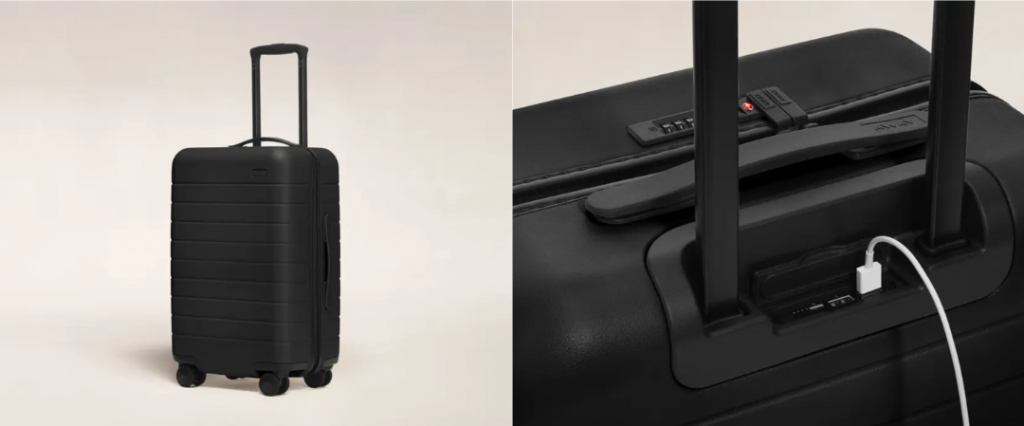
As a marketing professional, I wanted to retrace my consumer footsteps and try to better understand how I got to this point.
Luggage really hasn’t changed much since the rise of affordable air travel, and brands in the space are very competitive. So why is it that I ended up purchasing from AWAY?
We would all like to think that we thoroughly research our ‘considered purchases’ and that this results in us choosing the best possible product for our needs and budget. This is rarely the case.
In this article, I will talk through the complex entanglement of advertising and consumer purchase decision making, and how this resulted in me choosing just one product out of the many thousands of options out there.
THE MESSY MIDDLE
Throughout the history of the sector, people have tried to understand and model how marketing affects consumers but I particularly like the recent work carried out by Google’s consumer insights team.
The team wanted to understand contemporary shopping behaviour from the perspective of the consumer and so observed several hundred hours of shopping tasks, covering 310 individual journeys.
Shoppers were tasked with researching a product for which they were currently in-market. These journeys were captured using screen capture video, and the shoppers narrated their actions.
After behavioural scientists had analysed all these journeys and the qualitative data, they made an attempt at describing what they’d seen.
Drawing on a Post-It Note, they put a purchase trigger at the top, and the purchase itself at the bottom and illustrated a typical consumer journey in the middle.
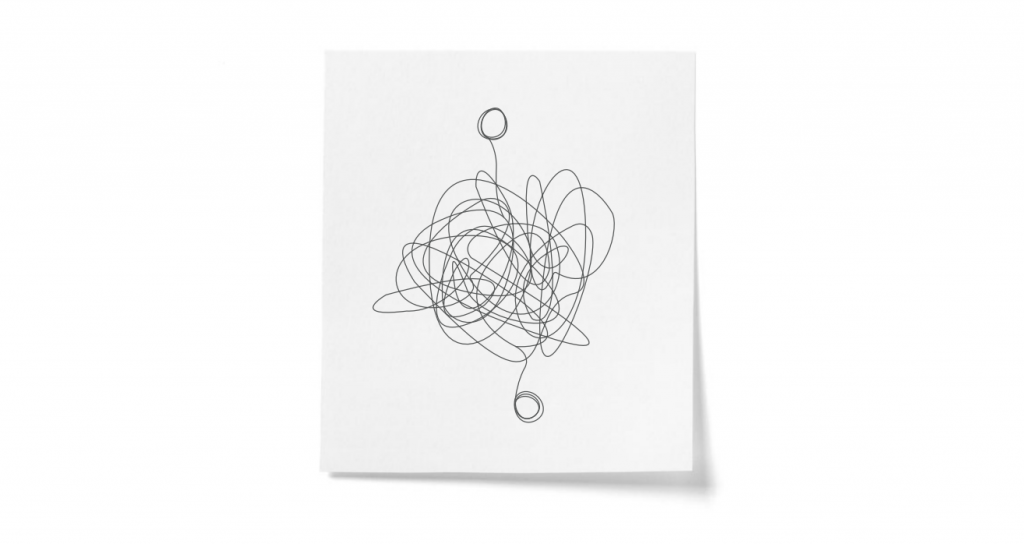
What they’d found was that there are no ‘typical’ journeys.
Instead, there’s a confusing web of touchpoints which they named ‘The Messy Middle’.
Consumers navigated backwards and forwards between different brand websites, search engine result pages, videos, social media and so on.
Similarly, previous data from Google highlighted over 900 digital touchpoints over a three-month period in one consumer’s car buying experience.
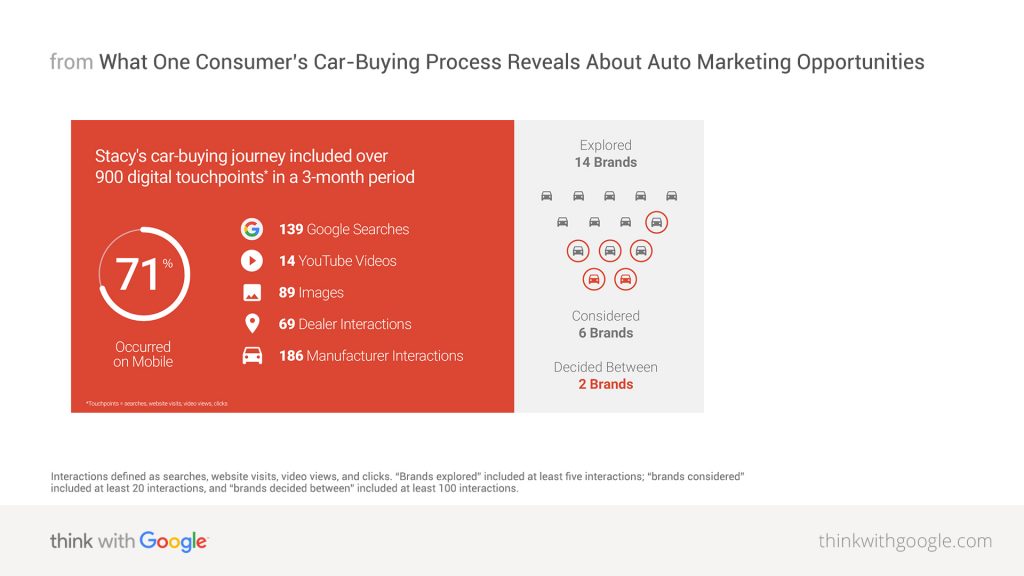
TURNING IT INTO A MARKETING MODEL
Interesting, but not particularly useful.
Fortunately, the Google team didn’t stop there. Despite the apparent uniqueness of each consumer’s journey, and the huge variety of different digital touchpoints and channels used, there was some pattern in what they observed.
Adding some structure, they developed a new marketing model based on exposure, exploration, evaluation and experience. In this model, between the initial trigger and the purchase, sits the messy middle, in which consumers cycle between exploration and evaluation until they are ready to purchase.
This happens in the context of exposure – represented by all of the thoughts, feelings, and perceptions the consumer has about the categories, brands, products, and retailers.
After purchase comes experience with both brand and product, all of which feeds back into the sum total of exposure.
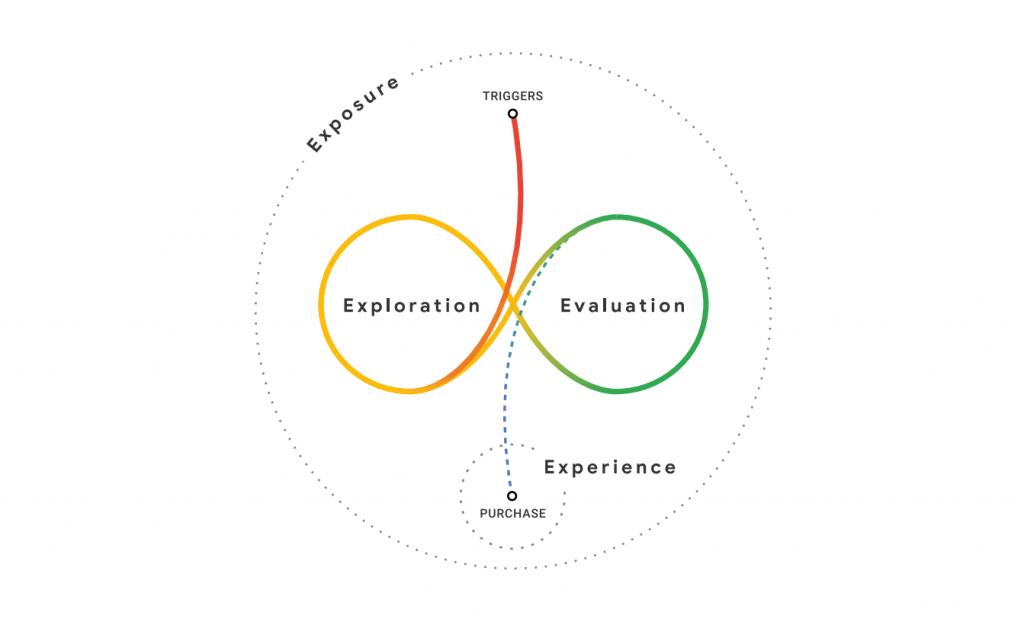
The idea here is that you can now apply digital touchpoints specific to your consumers’ journeys to these different elements. Revisiting my purchase, I will map out some examples of this.
EXPOSURE:
I mentioned previously that I had seen some social media ads highlighting a product feature of a built-in USB battery pack on a hardshell suitcase. I’m not entirely sure which brand this would have been but two strong candidates would be:
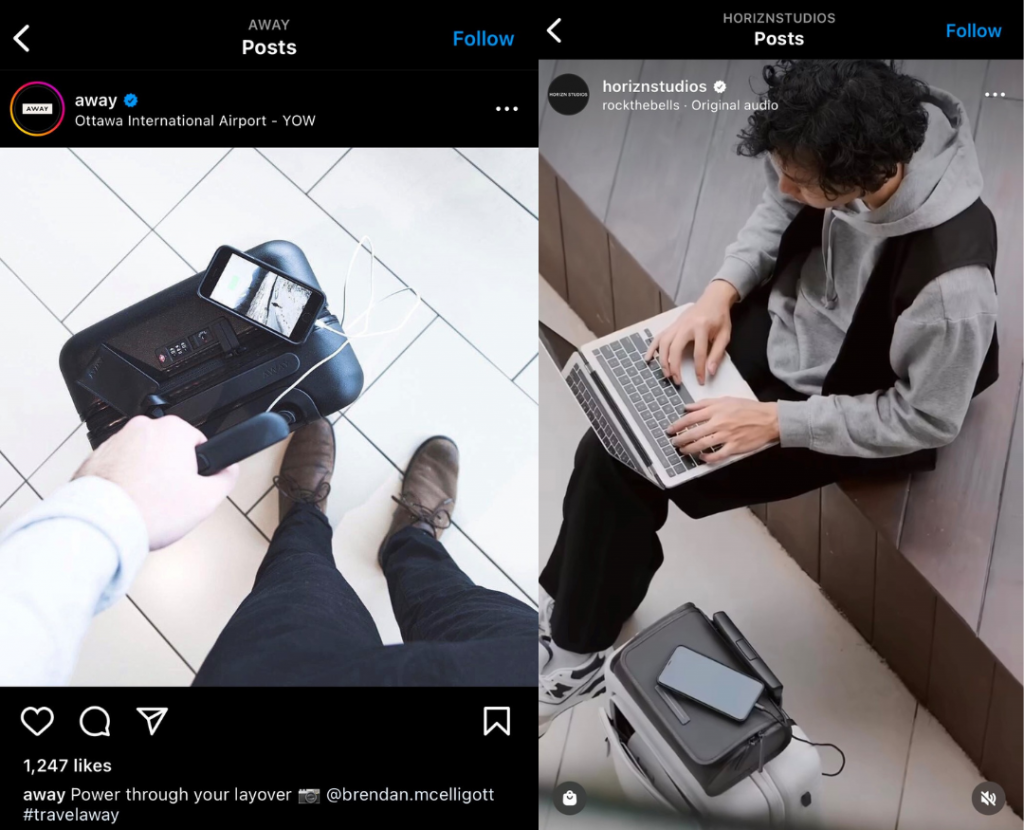
In terms of existing brand knowledge, the only thing that comes to mind is that I’ve used a Samsonite carry-on before – it’s extremely well made but they don’t currently manufacture hardshell suitcases with battery packs.
EXPLORATION:
As with 71% of consumer purchase decisions, I started with a search engine query. In my case, “carry on suitcase with usb battery pack” – this is what Google refer to as a ‘micro-moment’: a small but pivotal part of a consumer decision-making journey.
Low and behold, the first text result for this search is a Google search ad from AWAY:
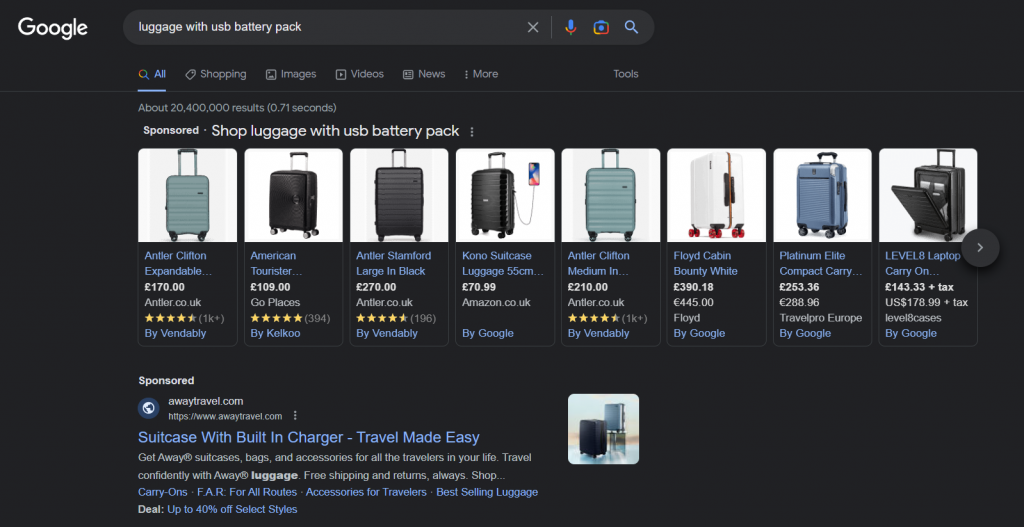
This ad leads to a great landing page. Although not highly specific to my interest in USB battery packs as indicated by the long-tailed query, the top products shown all include this feature.
This page does a good job of displaying a range of products as well as highlighting the key features of AWAY products, as well as some of their USPs such as a 100-day trial.
I explore their products in detail, making use of their thorough product photography and many product feature videos.
As a digital marketer, I am probably largely sold on this product by the quality of their website, to be honest.
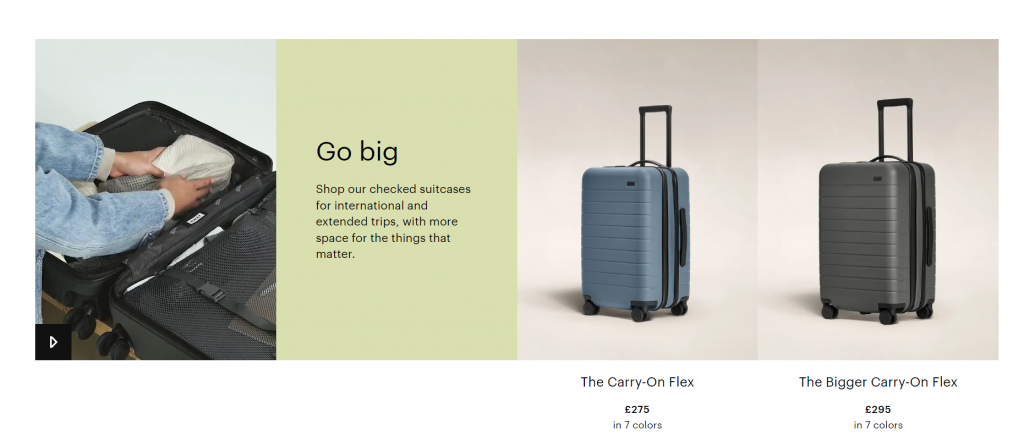
EVALUATION:
Being a pragmatic, rational shopper – as we all are – I do expend some effort researching comparable products and brands out there. Review websites and list articles are usually my go-to for finding these. Here are some of the other products I looked at:
Horizn Studios M5
- More expensive
- Bigger size features a battery pack
- Looks very well-made with some nice features
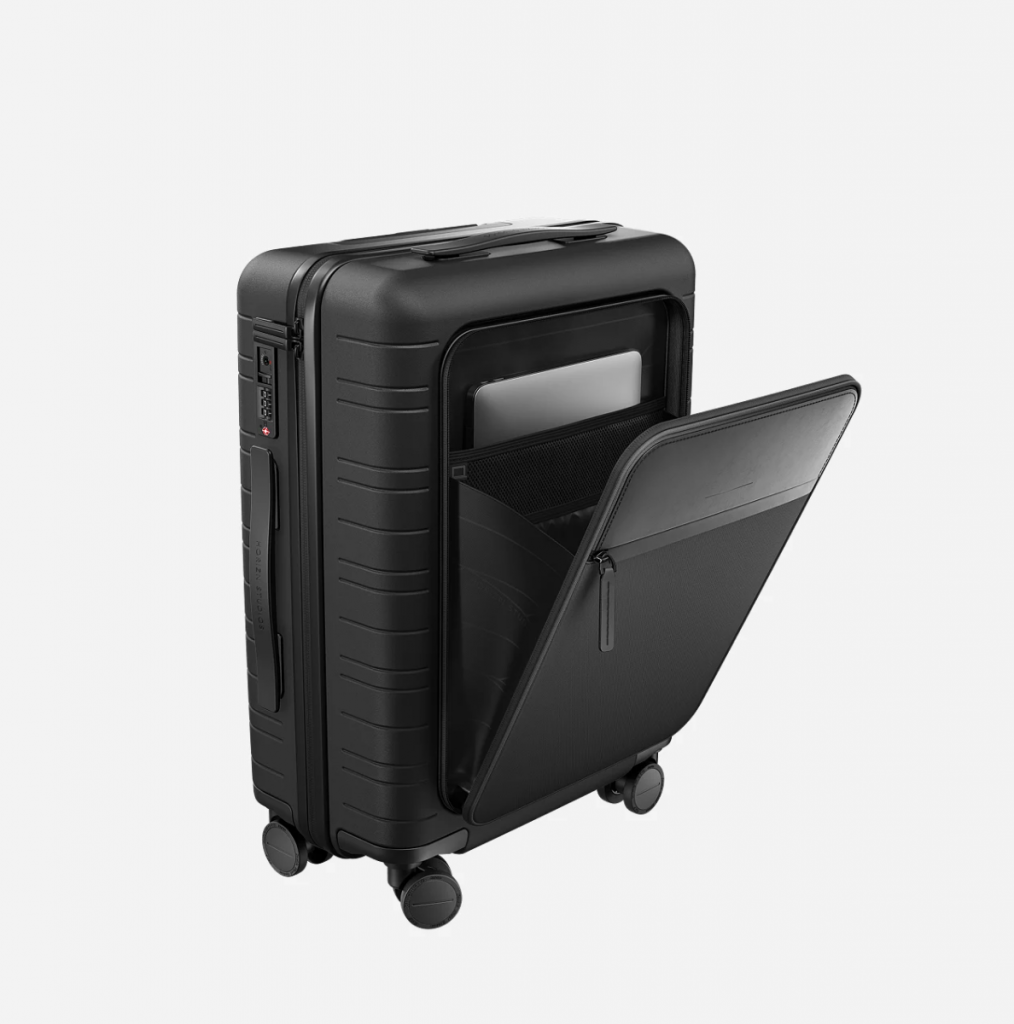
Antler Stamford
- Lots of choice but didn’t really like the design
- Doesn’t feature a battery pack
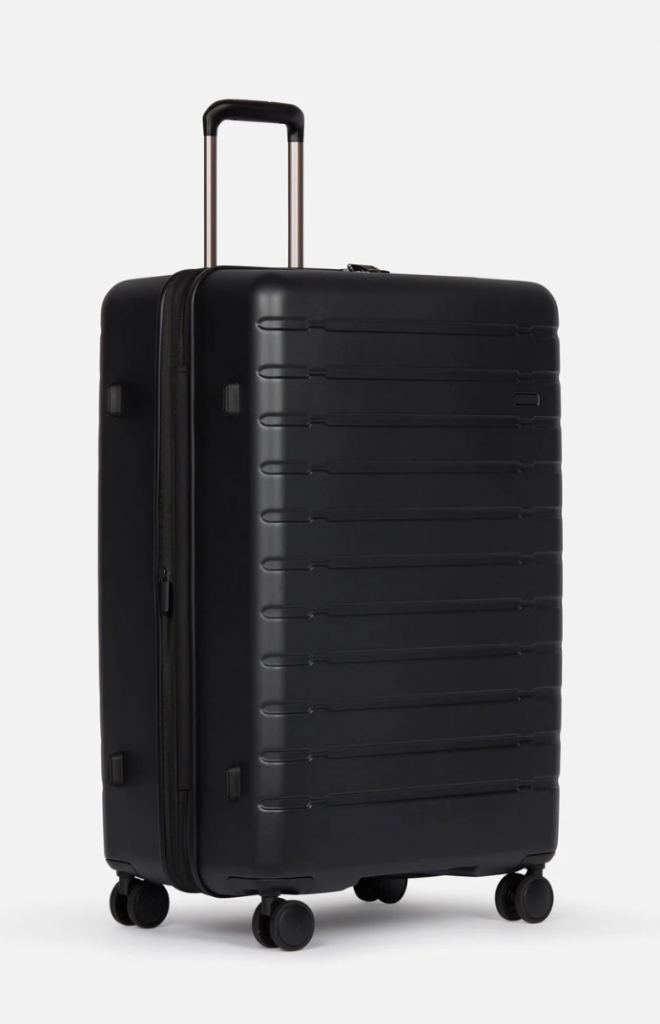
Wrangler Luggage Smart Set
- Lower price
- Features a battery pack
- Didn’t like the coffee cup holder
- Built quality seemingly not as good
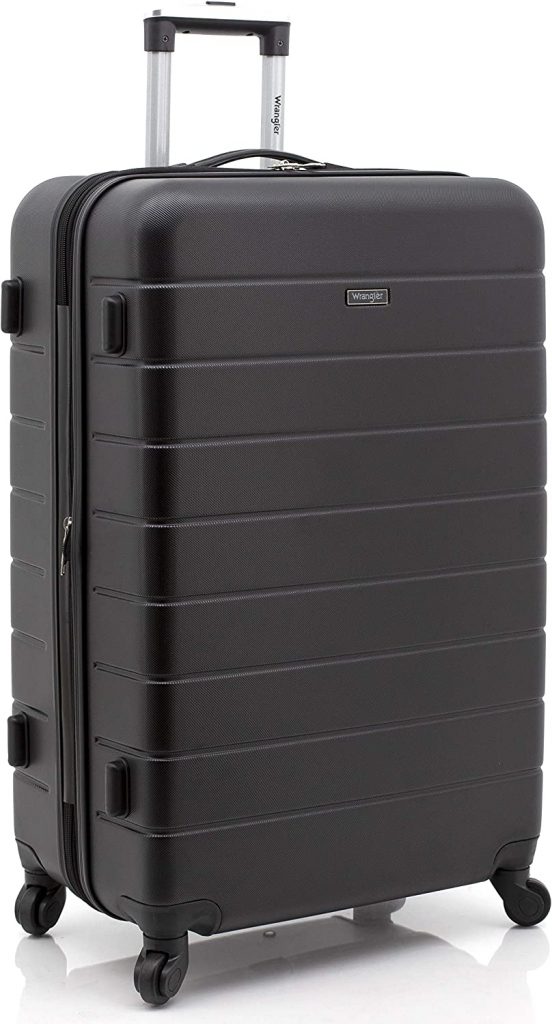
After some back-and-forth between websites and Instagram accounts, I’ve narrowed down my consideration to the AWAY The Carry-On and the Horizn M5 Smart.
Both meet all my requirements and based on all the product photography on their websites and Instagram accounts they both look great.
Here are some head-to-head figures that I could easily compile from these brands’ websites:
| AWAY The Carry-On | Horizn M5 Smart | |
| Price | £265 | £420 |
| USB Battery pack | Yes | Yes |
| Meets cabin bag specifications | Yes | Yes |
| Capacity | 39.8L | 33L |
| Weight | 3.4KG | 3.6KG |
Based on price and capacity, I am leaning towards the AWAY. The only thing I am thinking about is whether or not it’s ‘well-made’.
I wonder if I can see it in a store somewhere and take a look. A quick Google search later and it turns out that they have their own store in Covent Garden, right near where I work.
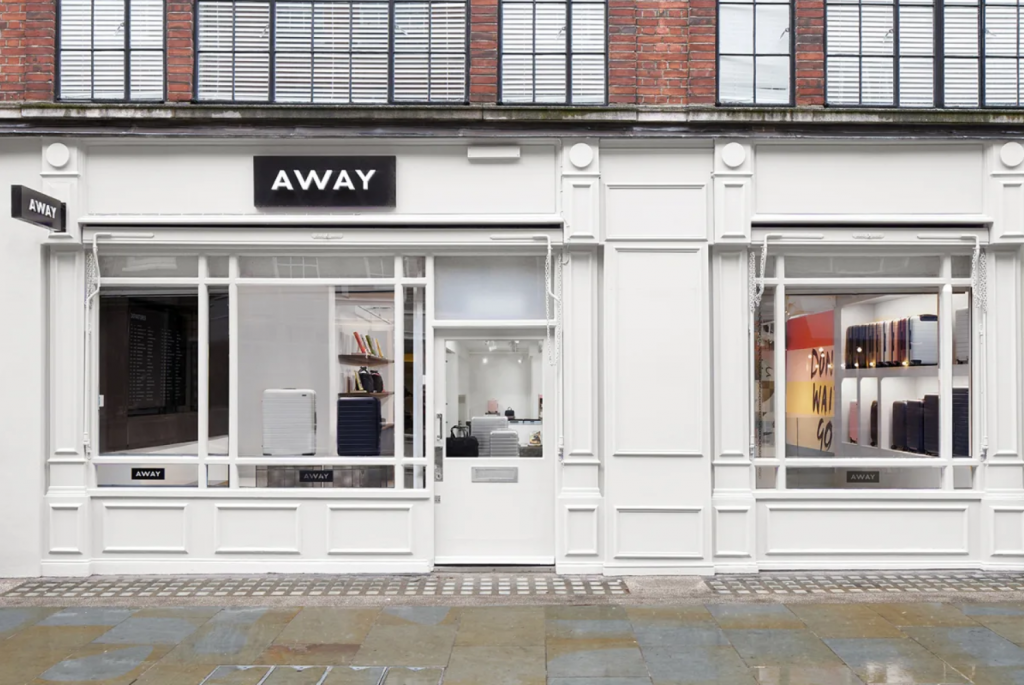
So next day, I head over during a lunch break and ask the really friendly team there if I can “look at The non-expandable Carry-On in matte-black with the USB battery pack” – they were slightly perplexed by my specificity.
Manufacturing quality looks great and the retail team showed me some cool features that I’d not picked up on looking online such as the interior compression (super useful!) and the tucked away laundry bag. Evaluation leads to purchase – I’m sold.
EXPERIENCE
One final note here, as the eagle-eyed amongst you may have noticed the fourth ‘E’ in the marketing model above – Experience.
I’ve used my Carry-On a few times and it performs excellently – I’ve even had someone at an airport ask me about it when they saw the battery pack. I’ve also recommended it to a few friends.
This is how a positive experience feeds back into the marketing mix. You can make your consumers your champions – a brand that delivers an amazing experience might even become a purchase trigger itself, increasing customer lifetime value.
Whereas a poor experience can push away other potential customers with bad reviews and comments on social media.
APPLYING IT TO YOUR CUSTOMERS
So what is the marketing lesson here for your brand and your customers?
To slightly rephrase the title of the recent winner of the Oscar for Best Film, the answer appears to be ‘everything, everywhere, all the time’.
AWAY ticked a lot of marketing boxes that were relevant to my journey:
- Social media advertising
- Great website
- Huge amount of product photography
- Lots of product information available online
- Strong organic social strategy
- Google Search advertising
- Physical store with comprehensive product range and friendly staff
- Competitive pricing
- Great product
As any marketing director will tell you, for most brands the budget simply doesn’t facilitate a truly ‘holistic’ strategy. And as a digital marketing professional, I will always recommend spending your budget where you can at least measure the impact, optimise performance and increase your volume.
However, in the scenario above, there’s a measurement gap between my exposure to paid social ads and website visits to my in-store purchase (or ‘offline conversion’).
Interestingly, at Found, we’ve been working closely with our data team at Braidr on some really clever solutions to plug this gap.
However, generally, unattributable offline conversions present a problem for marketing directors – “how did we win these customers and where should I spend my budget to win more of them?”.
Typically the answer is just put down to ‘brand awareness’ and you can work to better understand this picture with things like data-capture (e.g. encouraging newsletter sign-ups in exchange for discounts – you can attribute the source of those sign-ups and can cross-reference this with customer data acquired at the point of the offline conversion).
But as the messy middle model shows – there’s a whole lot going on in that decision making process and it’s vital that you are identifying which digital touchpoints are essential to your customer’s journey, and will be deal-breakers if they are missing.
So to answer my opening question, had I thoroughly researched my considered purchase and ended up choosing the best possible product for my needs and budget? I feel like I have.
But, in reality, I’ve only seen and touched one product from one brand. Everything else was online and my consideration was limited to brands which made their product images and information available to me when I was looking for it.
My advice for brands, then, is that you really do have to be in it to win it!



